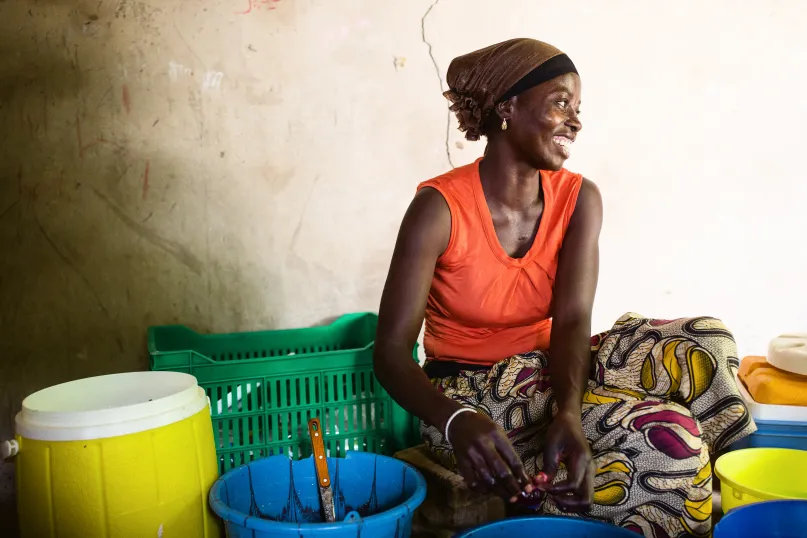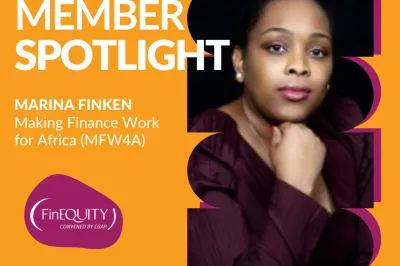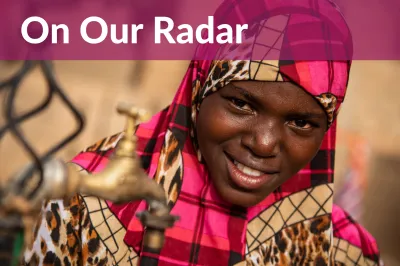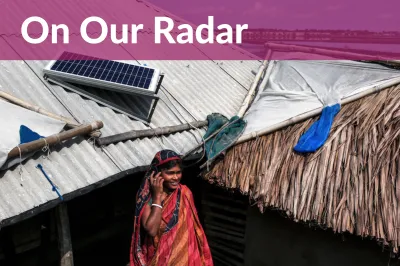Track the Money: a Gendered Account of the Financial Life of Microbusiness Owners Across Asia and Africa

Juliet, a mother of three residing in a southern Nigerian town, is an “entrepreneur of opportunity.” She started a crayfish business out of a desire to work on something of her own. While she started the venture as a side-business, it unexpectedly became quite large. Her business has thrived during the COVID-19 pandemic since crayfish is an important food in Southern Nigerian cuisine and its price significantly increased over the course of the pandemic. Even though she has since started a permanent job in a local hospital, Juliet never closed her business and has plans to expand it even further by securing a loan.
Vandana, who hails from a semi-urban town in northern India, is an “entrepreneur of need.” She runs a small grocery shop adjacent to her home. The shop was originally started by her husband; Vandana took it over when he got a job. She never planned to run a business but took it over for the sake of her family.
Women like Juliet and Vandana are under-represented in the enterprise space: only one in three small, medium and large businesses globally are run by women. The COVID-19 pandemic has disproportionately affected women entrepreneurs. Strict COVID-19 regulations reduced customers and disposable incomes, and distressed supply chains have affected all microbusinesses. For women-run businesses, reduced mobility and increased burden of unpaid household work have added to the pain.
But how do women-run microbusinesses differ from their men-run counterparts? How do the financial lives of both segments differ from each other? What kind of financial products could help women-run businesses grow? L-IFT and MSC are running the Corner Shop Diaries research to collect daily financial transaction data of corner shops (small neighborhood retail and service businesses) in Asia and Africa using the financial diaries method. The data from this study can help answer some of these questions. Let’s dive in.
1. Women can put in slightly fewer hours to run their businesses, translating into less profit when compared to their men counterparts. However, the difference is not always constant over time.1
Graph 2 shows that the net profitability of both men and women-run businesses are quite volatile. The graph indicates that women make less profit than men for the majority of the months studied - the difference is very clearly visible for four months but less so for five months, and in the remaining three months there was no difference. This might be because women were not able to work as many hours (as depicted in Graph 1), but the difference was not significant.
However, if we go beyond the numbers and understand the stories behind them, it becomes evident that women must put in extra effort to minimize the gender discrepancy in profitability. Many women are forced to choose a low-margin retail business in or adjacent to their home so they can fulfill their domestic (unpaid) responsibilities along with earning money. Another key challenge for women is the dependency on their male family members to help procure and transport goods for the shop. Social norms restricting women’s mobility are particularly important in the Asian countries studied.
2. Women microbusiness owners consistently save. Both men and women tend to save a similar proportion of their earnings.
The volatility in net income makes microbusinesses vulnerable to sudden shocks like an illness in the family or economic shocks like COVID-19, so savings are important. Graph 3 highlights that women maintained an almost constant level of savings throughout the year, whereas savings levels fluctuated quite a bit for men. This suggests different mental models with self-disciplined women saving specific amounts, and men saving according to the changes in their net cash flows. However, the proportion of profit that goes to savings is only marginally lower for women (28%) compared to men (32%), probably a reflection of the high profitability of male-run businesses.
Bank accounts are more often used to save by men (44%) compared to women (12%). For women, Microfinance Institutions (MFIs)/Savings Groups (SGs)/Rotating Savings and Credit Associations (ROSCAs) are more commonly used options for savings. Close to one-fourth of men and women studied prefer to save money at home. Gender gaps in account ownership and financial literacy, coupled with social norms, likely explain the difference in the use of savings tools by men and women.
3. Women get lower value loans than men. The sources of loans also vary across gender.
Among our diarists, we can see a difference in terms of the average loan taken2 by men (USD 1,057) and women (USD 560). The difference is similarly visible in both Asia (men= USD 2,195; women= USD 825) and Africa (men= USD 393; women= USD 208).
In terms of the value of loans (Graph 5), top sources for women are more secure options like banks followed by cooperatives and Self-Help Groups (SHGs).3 On the other hand, men depend more on their suppliers (in Africa) and MFIs (in Asia). If, however, we consider the volume of loans (Graph 6), friends/relatives/neighbors/other businesses are the top source of loans for both men and women. For women, neighbors were the biggest source of loan volume-wise, indicating the value of their social networks. Understandably, the informal channel of friends/relatives/neighbors provides more frequent small ticket size (often interest-free) loans and the formal institutions/suppliers (who are often large businesses) provide comparatively high-ticket size loans.
What have we learned?
Lack of appropriate formal savings products and access to easy credit poses a formidable barrier for women business owners to shield themselves from sudden shocks and grow their businesses. Along with demand-side capacity building, focusing on gender-intentional financial product design and targeting to better serve women-run businesses could begin to redress the gender gaps. Even the simplest of steps can make a considerable difference in terms of women’s access to and use of formal financial services to their fullest potential.
Anne Marie Van Swinderen and Sonal Jaitly provided inputs for this blog.
1) The data is from 68 respondents from three Asian countries (India, Bangladesh, Indonesia) and five African countries (Uganda, Nigeria, Senegal, Zimbabwe, Mali). Out of them 22 were women and 46 were men.
2) Data of 38 loans taken by 19 men and 7 women
3) SHG was source of loan for just one respondent.








